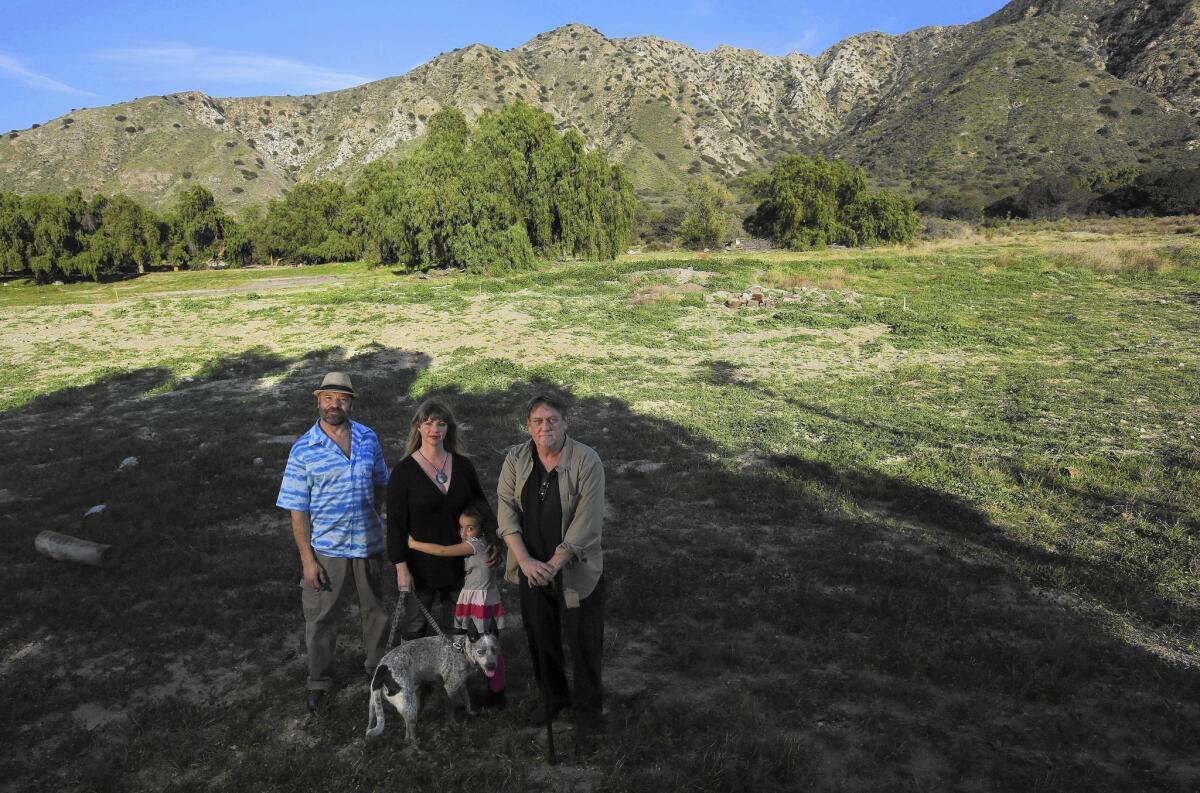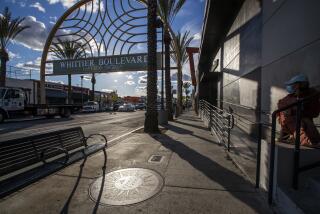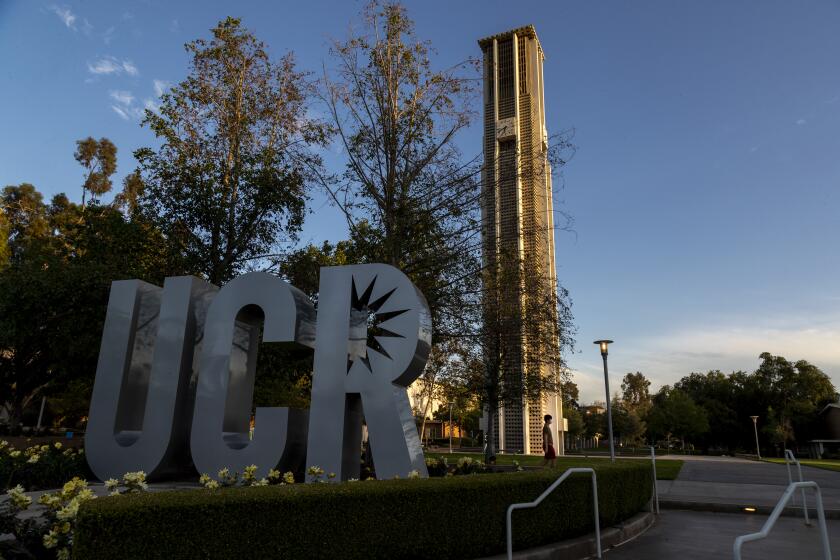Sunland-Tujunga residents work to keep bucolic feel in face of project

Weary of being dismissed as an outpost for biker gangs or a hideaway for meth labs, residents in Sunland-Tujunga worked for years to rebrand the northeast San Fernando Valley community as a place that took pride in its natural beauty and wide-open vistas.
Community leaders created an official logo featuring a towering mountain range and a majestic bridge surrounded by trees. They adopted a motto — “Gateway to the Angeles National Forest” — that is now displayed on light-pole banners, T-shirts and coffee mugs.
But now a developer’s plan to build a master-planned community on 78 acres of chaparral-covered land just inside the Angeles National Forest boundary is running up against that bucolic image.
------------
FOR THE RECORD:
Sunland-Tujunga development: An article in the March 9 California section about concerns over a master-planned development in Sunland-Tujunga said Councilman Felipe Fuentes declined to comment on the proposal. He has declined to take a stance on the matter, but he issued a statement saying that he looked forward to reviewing city planners’ findings and working to identify a project that considers the concerns of the community. —
------------
“It’s not just the local people that benefit from having this open space,” said Gail Carlson, a member of the Sunland-Tujunga Neighborhood Council.
The picturesque community cradled between the Verdugo and San Gabriel mountains is a place where people can escape the city, take in mountain views and watch hawks soar in the sky, she said.
But Calabasas-based developer Ben Salisbury sees something else that’s needed.
“The reality is the city of Los Angeles has a housing shortage at all levels, and there isn’t a lot of land in the middle of the Valley or in the city that’s left to build on,” said Brad Rosenheim, Salisbury’s spokesman.
Salisbury plans to build 242 upscale homes and three private parks, all linked with a new network of roads. Each of the two-story homes would come with five bedrooms and a two-story garage, according to city documents.
The land, which is already owned by Salisbury, is now zoned for 22 homes, according to the city’s planning department. The development would be built along Big Tujunga Canyon Road, a city-designated scenic highway, near the Tujunga Little League fields.
Councilman Felipe Fuentes, who represents the area, declined to comment on the proposed development, and a spokeswoman said he had not yet taken a stance on the issue.
But residents say the development would mar the character of the semirural area, and some question the safety of building so many homes in an area prone to fire and washed-out roads. In 2009, the disastrous Station fire burned in Big Tujunga Canyon near the proposed project site.
At a packed Sunland-Tujunga Neighborhood Council meeting earlier this year, residents said they felt as though their rustic neighborhood was under attack. Residents lamented Salisbury’s proposed housing tract, called Canyon Park Homes, as well as the long-range proposal to drive the state’s high-speed rail line through 35 miles of the southwest portion of the Angeles National Forest.
“We have to take a stand,” one resident told the crowd. “It’s time for that sleeping giant to wake up again.”
Some of the plan’s opponents have been fighting growth for years, one development after another.
Joe Barrett, a 20-year resident and president of the Sunland-Tujunga Alliance, helped lead a contentious battle against Home Depot, which planned to open a store in a closed K-Mart on Foothill Boulevard. Residents, Barrett said, didn’t want a big-box hardware store.
They kept the Home Depot from opening, but the building, like so many others on Foothill Boulevard, remains vacant.
Since then, residents have fought against construction of a massive home on the narrow hillside Sister Elsie Drive (they lost), as well as an affordable housing project on Samoa Avenue (the Los Angeles City Council approved its funding anyway). They also have resisted an effort to build a residential community on the site of a former World War II detention camp in La Tuna Canyon that city officials designated as a historic-cultural monument.
“We’re trying to be the best town we can be, but we never get the chance because we’re so busy fighting everything off,” Barrett said, steering his car along Big Tujunga Canyon Road past red-lettered signs that read: Save Our Canyon!
Residents like to say Sunland-Tujunga is a refuge, with a small-town feel 23 miles north of downtown L.A.
For years, it was known less for its tranquillity and mountain views and more for its oddball history: the acid-era hippy commune known as the Hog Farm, the dog who was nominated for honorary mayor and corpses sliding into streets and yards after Verdugo Hills Cemetery washed out.
It was known as a biker gang hideout, labeled the “speed capital of the Valley” and dismissed by the Urban Dictionary as “the land of hillbillies, rejects, lifted trucks and bros.”
“Our reputation as a town with meth heads, pot shops and motorcycle gangs ... is undeserved and has been a struggle to shake,” neighborhood activist Paolina Milana wrote last summer on a site raising money for the neighborhood’s rebranding campaign.
Sitting in a wicker chair in her frontyard just down the street from the proposed housing project, Charlene Mason Gallego recalled how Sunland-Tujunga felt like paradise when she moved to town years ago.
As her 5-year-old daughter played in the yard, Mason Gallego said she was happy her daughter would have a childhood where she could climb trees and hunt for ladybugs. Often, people on horseback ride along Big Tujunga Canyon Road in front of her house. As she spoke, a hawk circled over the yard, and birds chirped. She never dreamed she’d find such a place in L.A.
Mason Gallego laughed about the neighborhood’s reputation and its odd history. She thinks her neighbors hide behind it and play it up so people don’t discover their refuge.
“It’s like this neighborhood is a secret,” she said. “To start developing this area would be a tragedy.”
hailey.branson@latimes.com
Twitter: @haileybranson
More to Read
Start your day right
Sign up for Essential California for news, features and recommendations from the L.A. Times and beyond in your inbox six days a week.
You may occasionally receive promotional content from the Los Angeles Times.






